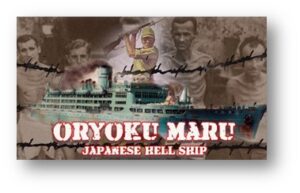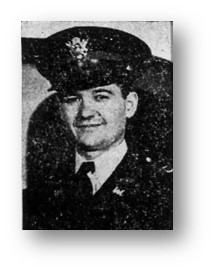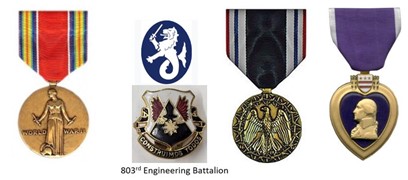Name: Winschuh, John Herman, 1stLT, USA
Local address: 213 Ravine Drive, Matawan, NJ
John was the second child of Theodore Herman Winschuh (1881-1971) and Gertrude Nagel (1882-1963), born February 8, 1906 in Frechen, Germany. His father, a carpenter, came to the United States in 1906, and John, along with his mother and brothers Albert Joseph (1904-1981) and Peter Francis (1907-1988) followed in 1907. Father Theodore initially found work with the railroad and they settled in Paterson, NJ – five more children followed from 1910 to 1921.
John graduated from St. Boniface’s Parochial School in Paterson, then that city’s Central High School. He went on to study electrical engineering at Rensselaer Polytechnical Institute in Troy, NY and graduated in 1929. He subsequently went to work for the Public Service Electric and Gas Company of Newark.
In October of 1934, he married Agnes Patricia Heuser, daughter of Augustus and Agnes Heuser of Matawan, 1940 census records list the Winschuh’s adjacent to the Heusers on Ravine Drive – possibly a “son-in-law” addition. When Augustus died in 1960, he resided at 213 Ravine.
John, who was in ROTC at RPI, was commissioned in the army in September of 1940. He was initially assigned to electrical school at Ft. Belvoir, Virginia then was transferred to Springfield, MA. After a short assignment to Hawaii and Wake Island, and finally to the Philippines with the 803rd Engineering Battalion (Aviation). The 803rd was on the Bataan Peninsula when the war broke out. They slowly retreated south as the invading Japanese pushed toward the fortress on Corregidor Island which guarded the entrance to Manila Bay.
In Paul W. Ropp’s Good Outfit, The 803rd Engineer Battalion and the Defense of the Philippines, 1941–1942, John is cited numerous times. Taking command of Company B, he was wounded by Japanese bombs on 8 April 1941. Evacuating to Corregidor, he became a POW when it surrendered and was initially confined to the POW camp at Cabanatuan. Then he went through hell.
 On December 13, 1944 John was on the transport Oryoku Maru with 1600 other POWs headed for Japan when US naval aircraft spotted its convoy off the east cost of Luzon and attacked it, unaware of the prisoners or 2000 Japanese civilians on board the ship. Numerous attacks inflicted horrible casualties on the Japanese civilians – mostly women and children – and their blood flowed down to the prisoners’ holding areas. After two days of horrible suffering in 110-degree heat below deck and repeated attacks by US carrier aircraft, the ship started to sink and around 1000 of the prisoners, including John, made it to the water – most were subsequently recaptured. Winschuh and over 1000 POWs were then reloaded on another merchant ship, the Enoura Maru.
On December 13, 1944 John was on the transport Oryoku Maru with 1600 other POWs headed for Japan when US naval aircraft spotted its convoy off the east cost of Luzon and attacked it, unaware of the prisoners or 2000 Japanese civilians on board the ship. Numerous attacks inflicted horrible casualties on the Japanese civilians – mostly women and children – and their blood flowed down to the prisoners’ holding areas. After two days of horrible suffering in 110-degree heat below deck and repeated attacks by US carrier aircraft, the ship started to sink and around 1000 of the prisoners, including John, made it to the water – most were subsequently recaptured. Winschuh and over 1000 POWs were then reloaded on another merchant ship, the Enoura Maru.
There was little food or water for the voyage to Formosa and 34 men died between 1-4 January 1945. Upon arrival, another 240 POWs were crammed into the ship.
On January 9, 1945, the same carrier aircraft that sunk the first ship attacked again severely damaging the Enoura Maru and killing over 300 men, including John. Of the 1600 originally on Oryoku Maru, only around 400 survived the war.
John’s body was returned to the United States in October of 1949 and were interred at Holy Sepulchre Cemetery, Paterson, NJ.
John’s older brother Albert was a captain in the Army’s Engineering Corps in WWII. John’s wife Agnes remarried Michael Marchigiano in 1951. They had no children and she died in 1999.


NO COMMENTS